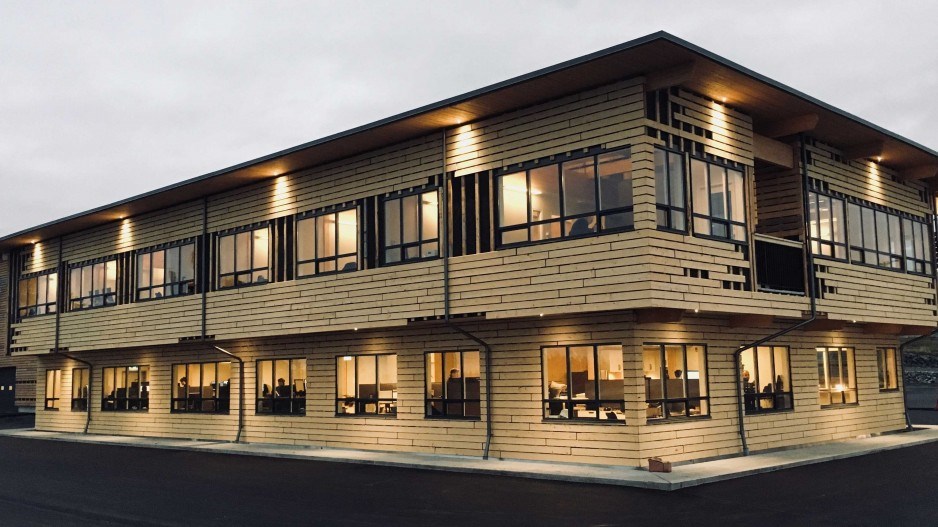Developers are finding that wood-use in the construction of high-performance buildings saves money and time while also delivering more in terms of beauty, versatility and performance. Wood building systems and prefabrication of wood-frame components results in more timely, organized building periods.
Recent Vancouver building projects with wood construction are setting the tone for sustainable innovation within the building industry, while cutting on energy costs and providing natural beauty for residents. Both The Heights and King Edward Villa feature concrete podiums, and five storeys each of wood-framed construction.
Saving time and money through prefabrication
With the King Edward Villa, the dense, urban location provided a narrow building site requiring a lot of the construction be completed offsite with prefabrication. This degree of off-site prefabrication is only possible when building with wood and it also reduced the construction schedule.
“The use of prefabricated structural elements enabled us to complete the framing on this building in just two months,” said King Edward Villa project owner Richard Wong.
“The superior grade of the materials used, and the precision of the components meant we got a higher quality building at a competitive cost.”
Estimates show that off-site prefabrication of wood-frame structure managed 15 to 20 per cent cost savings in comparison to other materials.
In addition, mass timber production company StructureCraft recently designed an industrial building prototype out of wood, completing the structure in just five days. In the past, industrial types of buildings have been built with tilt-up concrete walls and steel roofs; however, StructureCraft designed theirs with wood, which cost around the same as a tilt-up building, only with increased energy efficiency and more appealing aesthetics.
“Not only did we quickly and efficiently construct a cost-effective industrial building, this project showcases the advantages of building with engineered wood for the industrial buildings of tomorrow,” said Lucas Epp, Engineering Manager at StructureCraft.
Wood can help meet and surpass energy standards
Builders and designers can achieve higher energy efficiency due to wood’s inherent thermal properties and wood lends itself to Passive House construction.
Upon completion, The Heights will be the largest ‘Passive House’—ultra-low energy— certified building within Canada, proving that traditional wood-framed designs in new high-performance buildings is highly efficient and effective.
“The Heights is aiming to be one of Canada’s most energy-efficient new buildings through super insulation and greatly improved airtightness,” said Chris Higgins, City of Vancouver Green Building Planner.
According to Higgins, wood is a great insulator and minimizes ‘thermal bridging’—or heat loss within a building. It also lends itself well to airtight buildings since plywood can be taped onto wood to serve as an air barrier. All of this plus heat recovery ventilation and maintained healthy indoor air means that energy bills are estimated to be 90 per cent less for a wood building than for a regular building.
The Heights is a long-term commitment for its developers, meaning that operating costs are of great importance—once completed, the building would use 80 per cent less energy than a code minimum equivalent.
Lowering the carbon footprint through sustainability
Wood is currently the only renewable building material available to developers. Not only is wood plentiful in B.C.—the province is an international leader in sustainable forest management, requiring reforestation after harvesting—but it stores carbon, is biodegradable and recyclable.
The carbon stored in the King Edward Villa is equivalent to 575 cars off the road a year. That kind of impact is prompting some Vancouver developers to use wood in new building projects.
Wood brings warmth and beauty due to its natural characteristics and studies have shown that there is a solid link between wood-use in buildings and positive impacts on their occupants. Research has found that wood has the ability to reduce people’s stress, which can lead to lowered blood pressure, aggression and heart rates.
As more developers follow suit with incorporating wood into new building projects, cost-effective, climate-friendly and timely construction periods continue to become commonplace. To learn more about B.C. wood products visit www.naturallywood.com




